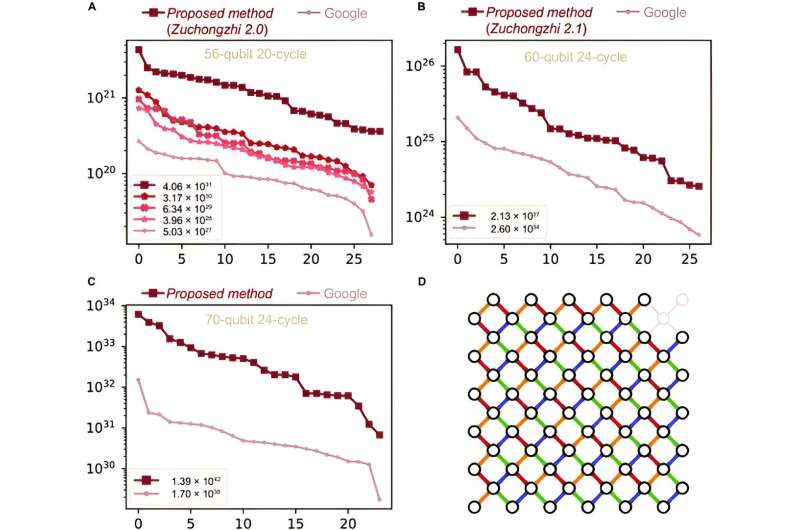This article has been reviewed according to Science X's editorial process and policies. Editors have highlighted the following attributes while ensuring the content's credibility:
fact-checked
trusted source
proofread
Unlocking quantum computing power: Automated protocol design for quantum advantage

Imagine a world where complex calculations that currently take months for our best supercomputers to crack could be performed in a matter of minutes. Quantum computing is revolutionizing our digital world. In a research article published in Intelligent Computing, researchers unveiled an automated protocol-design approach that could unlock the computational power of quantum devices sooner than we imagined.
Quantum computational advantage represents a critical milestone in the development of quantum technologies. It signifies the ability of quantum computers to outperform classical supercomputers in certain tasks. Achieving quantum computational advantage requires specially designed protocols. Random circuit sampling, for example, has demonstrated promising results in recent experiments.
An issue that must be considered in attempts to use random circuit sampling is that the structure of a random quantum circuit must be carefully designed to enlarge the gap between quantum computing and classical simulation. To address the challenge, researchers He-Liang Huang, Youwei Zhao, and Chu Guo developed an automated protocol-design approach for determining the optimal random quantum circuit in quantum computational advantage experiments.
The quantum processor architecture used for random circuit sampling experiments uses 2-qubit gate patterns. The 2-qubit gate realizes the interaction between the two qubits by acting on the states of the two qubits, thereby constructing a quantum circuit and realizing quantum computing.
It is necessary to maximize the classical simulation cost to ensure that the superior performance of quantum computing is fully exploited when performing calculations. However, determining the optimal random quantum circuit design to maximize classical simulation cost is not straightforward.
Finding the optimal random quantum circuit first requires exhausting all possible patterns, then estimating the classical simulation cost for each of them and selecting the one with the highest cost. The classical simulation cost is highly dependent on the algorithm used, but the traditional algorithm currently has the limitation that the estimation time is too long.
The new method proposed by the authors uses the Schrödinger-Feynman algorithm. This algorithm divides the system into two subsystems and represents their quantum states as state vectors. The cost of the algorithm is determined by the entanglement generated between the two subsystems. Evaluating complexity using this algorithm requires much less time, and the advantages become more apparent as the random quantum circuit size increases.
The authors experimentally proved the effectiveness of the random quantum circuit obtained by the proposed method compared with other algorithms. Five random quantum circuits were generated in the Zuchongzhi 2.0 quantum processor, each with a different Schrödinger-Feynman algorithm complexity. Experimental results show that circuits with higher complexity also have higher costs.
The rivalry between classical and quantum computing is expected to conclude within a decade. This new approach maximizes the computational power of quantum computing without imposing new requirements on the quantum hardware. In addition, the main reason this new approach can obtain random quantum circuits with higher classical simulation costs may be the faster growth of quantum entanglement.
In the future, understanding this phenomenon and its underlying physics may help researchers explore practical applications using quantum advantage experiments.
More information: He-Liang Huang et al, How to Design a Classically Difficult Random Quantum Circuit for Quantum Computational Advantage Experiments, Intelligent Computing (2024). DOI: 10.34133/icomputing.0079
Provided by Intelligent Computing





















